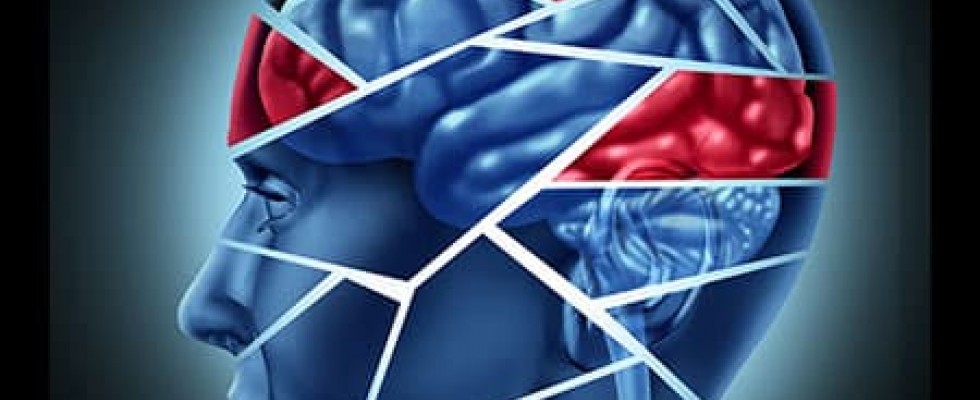
In recent years, those in health care have come to understand a great deal more about traumatic brain injury (TBI), in part due to a spotlight on sports- and military-related head injuries. There are an estimated more than 5 million Americans living with TBI—many of them elderly people who suffered their injury when younger or who are newly diagnosed, especially after a fall. In fact, TBI is responsible for more than 80,000 emergency departments each year for people 65 and older, according to a study published in the Journal of the American Geriatric Society.
Having a history of TBI may increase the risk of a dementia diagnosis or early-onset Alzheimer’s disease. And those newly diagnosed with TBI in their later years may experience a wide range of cognitive and neuropsychiatric symptoms, including depression, anxiety and post-traumatic stress disorder.
As more Americans strive to age in place, in-home caregivers are likely to encounter patients with TBIs—but may not know how best to work with them. BAYADA Home Health Care recently partnered with the Brain Injury Association of Pennsylvania for TBI Awareness Month and put together a two-part educational series on “Traumatic Brain Injury Across the Lifespan.” More than 235 clinicians from across the country registered for the virtual event. HomeCare talked with organizer Cay Ambrose, RN, CRRN, who is director of BAYADAbility Rehab Solutions, a team of 25 certified rehabilitation registered nurses who work throughout the company.
HOMECARE: Why is understanding TBI important for caregivers developing a care plan for home health?
AMBROSE: As with anything, the more knowledge you have, the better you can provide care. And that’s our No.1 goal.
HOMECARE: Are those who attended the presentation well prepared to work with patients with TBI?
AMBROSE: My take on this is I’ve been a nurse for over 30 years, and I don’t think there’s a day that goes by that I don’t learn something new. Education is something [nurses] strive for, even if they have some baseline knowledge. I am a certified rehab nurse, so I have been working with brain injuries and spinal cord injuries my whole nursing career, and I still learn things
every day.
HOMECARE: Are there different approaches when working with someone who is recovering from a recent TBI versus someone who maybe had one years earlier and is a patient because of their age or chronic illness?
AMBROSE: From a caregiver perspective, if somebody is newly diagnosed with a brain injury, there are different aspects that we have to be aware of—and when we’re developing a plan of care, obviously everyone in the home is new to this, including the patient. So we’re there not only to support our client or our patient, but we’re also there to support the family and to provide family teaching and basic family support. They have to learn what the new normal is, whereas someone who’s been home for 10 years has their routine down.
As people age with their disability, there can be some increased aspects of care that depend on the level of their brain injury. So, someone who had a mild brain injury in their 20s may not seem any different than you or I as they age, whereas someone who has severe head injury or brain injury may have more deficits as they age.
So really, there is no definitive answer. I think the most important takeaway is that we need to treat the person and not the disability.
HOMECARE: Is in-home care especially suited to manage complex conditions like brain injuries?
AMBROSE: Yes. Because having people in their own home around their loved ones is the best place for them. Homecare in general is seeing a rise because hospitals are discharging earlier, and hospital lengths of stay are nowhere near what they used to be. So, obviously the best place for anybody to be is in their home, whether it be TBI or any other condition.
HOMECARE: Are there a few basics that you can share with us that you feel are critical for those in the industry to understand in terms of managing TBI?
AMBROSE: Safety has to come first. The home environment needs to be assessed for all possible safety issues. When the care plan is being developed, safety has to be the No. 1 priority at all times. This is what we do—you don’t know what you don’t know. And this experience is very scary for the families—they don’t know, they’re so happy to have their family member home, they’re not thinking of all these little things, whereas as a homecare professional we can come in and advise them on what needs to be taken care of. We can make recommendations in terms of safety tips: Do they have smoke detectors? Do they have an emergency plan to get out of the home in case of a fire? Where are they going to store medications? If there is medical equipment, are there enough outlets or will [the equipment] be plugged into extension cords, and is that safe? If the patient is at risk for elopement, is there something we can do to make sure that they don’t—can we put special locks on the door or a pad near the door to make sure that it’s alarmed?
HOMECARE: Some of those suggestions sound like how we talk about working with patients using memory care at home.
AMBROSE: It’s not unsimilar. Not all our brain injury patients require that, so I will always go back to treating the person and not the disability. But one of the things I would definitely say is hard for families of a person with a brain injury is that a lot of times they look totally fine. It’s different when someone’s, say, been in a major car accident, and they have casts on or they’re paralyzed or when someone has an obvious disability. Often with brain injury (unless there’s been a dramatic accident), it’s not as obvious. How do you reintegrate them into society?
